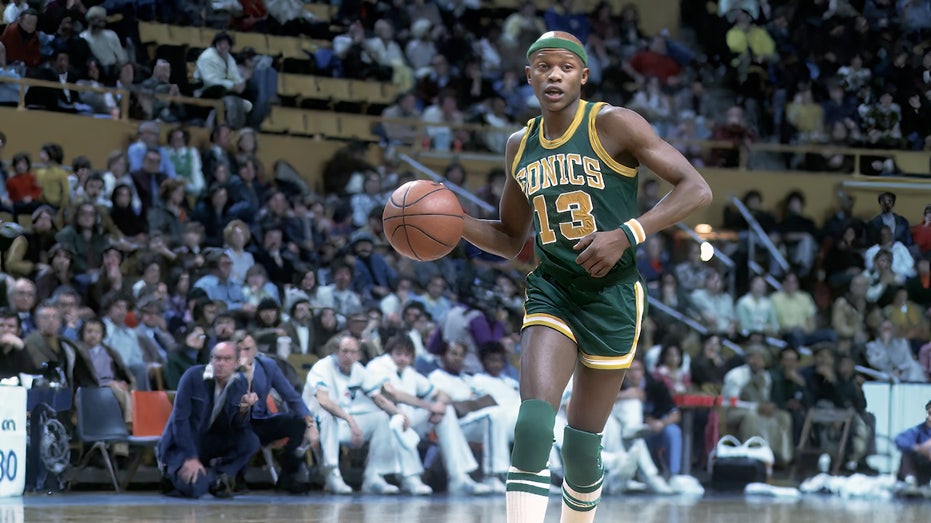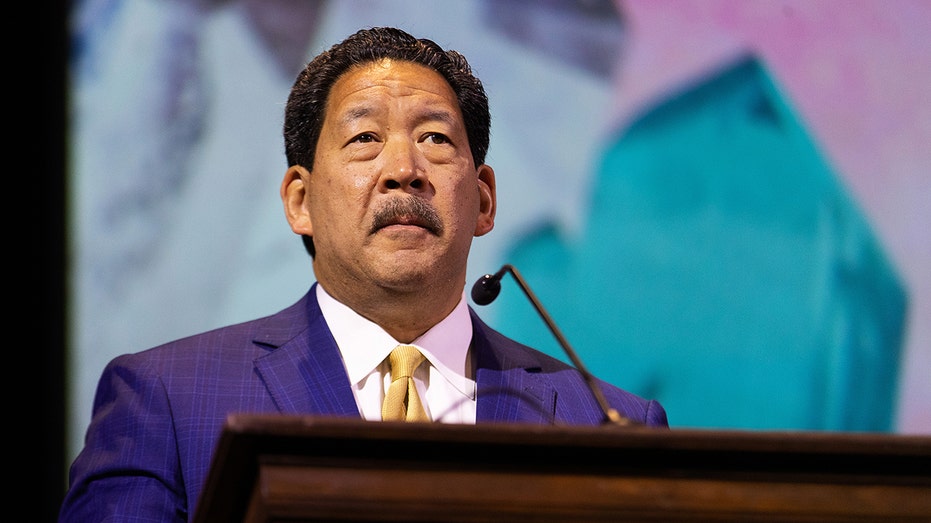Jeff Bezos just sold one of his many Seattle mansions for $63 million. Take a look at the lavish US properties he's bought over the years.

Chip Somodevilla/via REUTERS
- Jeff Bezos sold one of his several Washington properties after moving to Miami in 2023.
- He snapped up three mansions on Indian Creek Island, leaving behind eight properties in Washington.
- He closed the reported deal for $63 million on a Hunts Point estate.
Amazon founder Jeff Bezos has amassed a real estate portfolio that rivals some of America's biggest property owners. He's the 23rd-largest landowner in the US, according to the 2025 Land Report, with at least 420,000 acres to his name.
Bezos' Seattle-area real estate empire, which was worth as much as $190 million in 2023 based on Zillow estimates, is getting smaller. Almost two years after moving south, Bezos sold one of his several Seattle properties for a big profit.
He sold his 9,420-square-foot home in Hunts Point, Washington, for a record $63 million, Puget Sound Business Journal reported in April. The estate was acquired by Cayan Investments LLC, Business Insider confirmed Thursday.
His collection also includes three properties in Indian Creek Village, an island off the coast of Miami, where he announced in 2023 he'd be relocating with his fiancée Lauren Sánchez.
Bezos, worth $211 billion according to the Bloomberg Billionaires Index, purchased several properties with his former wife MacKenzie Scott. Their divorce was finalized in 2019, and it's unclear which of these properties Bezos still owns, as divorce records were not made public.
From two neighboring Beverly Hills mansions to multiple estates in exclusive Seattle suburbs, here are Bezos' residential properties in the US.
Caroline Cakebread, Katie Warren, Dominic-Madori Davis, and Libertina Brandt contributed to an earlier version of this article.

Pablo Martinez Monsivais/AP
A 2025 Land Report named Bezos the country's 23rd-largest landowner, with 420,000 acres to his name.
Over the years, he's picked up several New York City apartments, a ranch in Texas, and homes in Washington state, California, and Washington, DC.

Harrison Jacobs/Insider
In 1998, Bezos paid $10 million for a 5.3-acre property in the wealthy suburb on the shores of Lake Washington.
Twelve years later, in 2010, he spent $45 million on an estate nextdoor, the Puget Sound Business Journal reported.
One home is a 20,600-square-foot, five-bedroom, four-bathroom house with a basement spanning over 5,000-square-feet and five fireplaces. The other is an 8,300-square-foot, five-bedroom, four-bathroom home built in 1940.
The Wall Street Journal reported that he purchased the property next door in 2010 under Aspen Ventures LLC. That lot has a 24,000-square-foot Tudor-style, six-bedroom, six-bathroom mansion, which was listed for $53 million.
Finally, in 2015, he purchased a $3.9 million property across the street from the Medina compound, Business Insider previously reported. The comparatively smaller property was purchased through a trust managed by the same law firm, and with the same property tax address, as the other Medina properties Bezos and Scott purchased before their divorce.

Harrison Jacobs/Insider
Many of the neighborhood's mansions are hidden away behind gates and protected by elaborate security systems.

City Realty
The three units in The Century building on Manhattan's Upper West Side were purchased in 1999 from the former Sony Music head Tommy Mottola, The Observer reported at the time.
More than a decade later, in 2012, Bezos bought an additional unit in the building, valued at $5.3 million in 2012, making him the owner of four condos in the building.
The Art Deco building was built in the 1930s, boasts a concierge, elevator attendants, and three separate entrances.

Shutterstock
In 2004, Bezos purchased Corn Ranch, a 165,000-acre stretch of land outside Van Horn, Texas.
He told the local paper he bought the property so his family would get the chance to live on a ranch like he did when he visited his grandfather as a child. The land is also the most productive launch site for his aerospace company Blue Origin.

Getty Images
He spent $23 million on the property, which dates back to 1912 and has a spot on the National Register of Historic Places, The Washington Post reported.

Getty Images
The Obamas purchased an $8.1 million property nearby in 2017, which marked the second-most expensive transaction in the neighborhood, after Bezos' — The Washington Post reported.

Harrison Jacobs/Business Insider
It's been reported that Bezos may have also purchased the home across the street in January 2020 for $5 million, though BI could not confirm he owns the property.

Michael Walmsley
The largest property of the 2019 spending spree was a $37.5 million waterfront estate in Hunts Point, an exclusive neighborhood with fewer than 400 residents. The home has 300 feet of coastline, a rooftop deck with a fireplace, and a glass bridge connecting to a two-story guesthouse.
He purchased two more modest homes in Hunts Point around the same time, which his neighbors said are used for security and other staff, including a chef.
When he offloaded the $37.5 million estate in April, he got $25 million more than he purchased it for in 2019, Puget Sound Business Journal reported.

Andrew Webb / Clarity Northwest Photography
He also purchased a staff home in the nearby Yarrow Point. The home sold for $4.2 million in January 2024, according to its listing on Compass.

Marketing by Visualhouse
In 2019, he dropped about $80 million on three adjacent New York City apartments in the priciest-ever real-estate deal south of Manhattan's 42nd Street.
The spread included a three-story penthouse and two units directly below it. It was the priciest real estate deal south of Manhattan's 42nd Street, appraiser Jonathan Miller told The Wall Street Journal at the time.

Marketing by Visualhouse
Bezos has since purchased two more units inside the prewar building. In 2020, he spent $16 million on an additional unit, and purchased a $23 million apartment in the building in 2021.
The purchases brought his grand total to $119 million of real estate in the one building, which has a fitness center, golf simulator, game room, and movie-screening room, according to the property's website.

Shutterstock/Zhukova Valentyna
He first bought property in the cushy neighborhood in 2007, shelling out $24.45 million for a mansion that had tennis courts, a guesthouse, a six-car garage, and a pool, the Los Angeles Times reported at the time. In 2017, he bought the house next door for $12.9 million.
In 2022, Scott donated the two mansions to a housing charity.

Google Earth
Bezos purchased the nine-acre Warner Estate in Beverly Hills for $165 million from billionaire David Geffen.
The estate was designed for Jack Warner — the former president of Warner Bros. Studios — in the 1930s.
The most expensive home sale in California's history at the time, Bezos purchased the house for $165 million from David Geffen, who bought it in 1990 for $47.5 million. The mansion has guest homes, a tennis court, a swimming pool, and a nine-hole golf course.
Like many of his other homes, privacy is key at the Warner Estate. Hedges surround the nine acres on which the 13,600-square-foot home sits.

Carlo Chirchirillo/Shutterstock
Bezos paid about $78 million for the Maui home, according to The New York Times.
In the weeks leading up to the purchase, Bezos made several donations to local organizations — including Hawaii Land Trust and Mālama Family Recovery Center, local news site Maui Now reported.
Sánchez announced that she and Bezos would donate $100 million to help Maui after neighborhoods on the island were devastated by fires.
"Jeff and I are heartbroken by what's happening in Maui. We are thinking of all the families that have lost so much and a community that has been left devastated," Sánchez wrote on Instagram.
Their notable island neighbors include fellow billionaires Oprah Winfrey, Paul Thiel, and Oracle executive Larry Ellison, according to the Times.

In August 2023, he added a $68 million mansion on Miami's "billionaire bunker" island, Indian Creek Village, to his portfolio.
The home reportedly spans 9,300 square feet, and the entire property is about 2.8 acres. The exclusive island has been home to Ivanka Trump and Jared Kushner, Tom Brady, and billionaire investor Carl Icahn.
While announcing his relocation, Bezos said that he wanted to be closer to his parents and space company Blue Origin's operations in Cape Canaveral, Florida.

Karwai Tang/WireImage via Getty Images; Jeffrey Greenberg/Universal Images Group via Getty Images
Bezos bought the seven-bedroom Indian Creek mansion for $79 million in October, Bloomberg reported, citing unnamed sources.
The nearly two-acre mansion was built in 2000 and boasts features like a home theater, library, pool, and wine cellar.
But he wasn't done yet with his Indian Creek shopping spree. People representing Bezos reportedly contacted at least three other island homeowners to discuss purchasing their properties, Bloomberg reported in early January.

Chandan Khanna/AFP via Getty Images
In April 2024, Bezos made his third purchase on the island known as the "billionaire bunker," Bloomberg reported. He paid $90 million for the six-bedroom home in an off-market transaction.
The house last sold for $2.5 million in 1998, according to the outlet, which noted that Bezos plans to live there while tearing down the other two properties he'd purchased on the island.
Indian Creek, located on Biscayne Bay and home to fewer than 100 residents, has its own mayor and police force, and is accessible only via a gated bridge.



